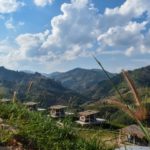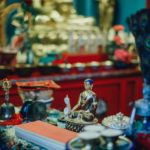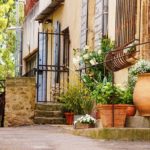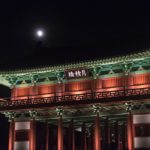Volunteering with Elephants in Surin, Thailand
Thailand is known for a lot of things: beaches, full-moon parties, massages, shopping, everything under the sun that a hopeful tourist looks for. While the bustle of Bangkok didn’t hurt and the full-moon parties of Koh Phangan are quite a phenomenon, for old souls like me visiting a small village in the Thai wilderness was a transformational experience.
Bathing the elephants in the village, making paper out of elephant poo, cutting and chopping bamboo for elephant feed, learning how to cook a local Thai meal, waking up in a wooden house to see an elephant mother-daughter cuddling, and discussing the intricacies of Thai temple architecture with a Spanish volunteer over some coconut water were some of the memorable highlights of my trip. What the Thai countryside gave me will stay with me for a long time to come.
I chose a two-week volunteering project in a small elephant village. The motivation to join this project came from several factors: to go somewhere far away, to do something different from what I am used to doing at home, to be able to shift my focus and fixation from everyday life, to get outside my world into a new one even for a short time and possibly do something meaningful in the journey. I had a rough idea of what I wanted from my trip. I traveled solo but I met some people and got some stories that’ll be a part of my conversations for a long time to come.
I spent two weeks in Tha Thum, a district or Amphoe in Surin province. Surin town is about a seven-hour train or bus ride from Bangkok, to the northeast. The journey from Bangkok was an interesting one. On one side there was a wide expanse of highways which soon gave way to the Thai countryside. The simpler, older and more colorful rural life of the villages is worth exploring.
There’s a lot of work to be done for the elephants here: making their vitamins, cutting their feed, taking them for walks, taking them for a bath, collecting their poo to be made into paper later. Volunteers from different corners of the world help the locals do these things.
I spent the first two days of my two weeks in Thailand in Surin town, staying at the Hotel Manorette, a beautifully lit hotel with a mini traditional Thai temple at its entrance. I headed to the Lee Elephant Village shortly after, in Amphoe Tha Thum. The houses in the village were almost all two-storied wooden structures on stilts. In many of the older houses there is no indoor plumbing, and usually a common community water source. To relieve oneself in the villages one must use an outhouse, with either squat toilets or sit-down commodes. Many homes don’t have showers, either. The traditional way of showering is by scooping some water with a container from a large storage urn and throwing it on your body. The house I stayed in had bathrooms, but the inhabitants often chose to have an open-roof shower, even nicer when it was raining.
Most villagers in the elephant village have about one acre of land to the side and back of their houses where they have gardens and fruit orchards. Agricultural land is used for growing rice, sugarcane, potatoes, and a few vegetables. The mahouts who care for the elephants are often farmers too, keeping chickens, ducks, and pigs in their backyards. The house where I stayed was a two-storied wooden house that belonged to the local mahout. Slightly larger than the other houses, an elephant family lived in the backyard.
A lot of volunteer travelers visit this particular village as several volunteering organizations facilitate experiential travel opportunities here. There’s a lot of work to be done for the elephants here: making their vitamins, cutting their feed, taking them for walks, taking them for a bath, collecting their poo to be made into paper later. Volunteers from different corners of the world help the locals do these things. There’s also plenty of time to lounge in hammocks in the backyards.
A WiFi-free place in the wilderness, this small elephant village wakes up early morning and sleeps at sunset. While I did wake up on time to take the elephants for a bath, the nights were spent talking to the few other volunteers in the house.
Surin is also known for its Sirikit Sericulture Center. I visited to see how silk is produced. At first I thought the products were too pricey, but after witnessing how meticulously it is prepared, it was easier to understand why the prices were high. Thailand has many local artisans who work hard to conserve their local craft traditions. These skills are passed on from one generation to another. Surin is also known for its silver. A well-known artisan of the province is Puan Chaiothong, known as Uncle Puan or Lung Puan. For over six decades, Lung Puan has created gold and silver jewelry using ancient Thai and Khmer designs and production methods. His creations are pieces of art, sought after by collectors, exhibited internationally and worn by royalty.
It’s also possible to visit Cambodia from Surin. At just 5-6 hours from Surin by road, it is easy to visit Angkor Wat.








